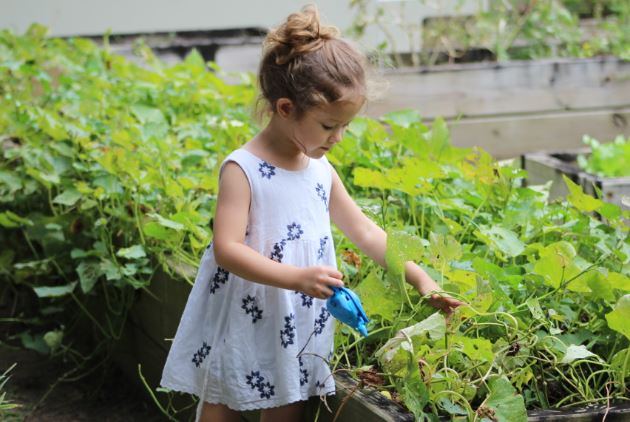Perhaps you could be wondering what a classroom garden is. A classroom garden might mean any garden where the students are taught to care for the plants, flowers, vegetables or all of them. At the same time, students are also taught about the history and enemy of flowers. Through the classroom garden, students get to learn more about the laws of natural forces. According to researchers, classroom gardens involve more than scientific lessons on plants and life cycles. The students are usually offered an opportunity to care for nature while at the same time interacting with a massive affluence of information. Once in a while, students need help completing their biology papers within the estimated duration. If you ever find yourself in a similar situation, consider requesting paper writing
services from reputable custom writing companies.
It is vital to note that growing a classroom garden will educate the students about wellness, health, and nutrition in a practical way. Researchers also believe that when students have a connection with the food they eat, they are more likely to enjoy consuming it. On the same note, students who plant and take care of the plants have a higher chance of eating healthy and nutritious foods because they can nurture them. In essence, so many students can learn from their interaction with the classroom garden. This article will discuss tips for creating an amazing classroom garden.
Planting seeds in cups
Students should get small compostable or plastic cups that can be used to germinate fast-germinating seeds. Beans are fast-germinating seeds; hence it’s easier for them to be germinated and be grown by students. Soil or other germination medium should be filled in the cups to about ¾ capacity, and then drill a small hole into the soil/germination medium. The seeds should then be planted in the drilled holes, and then a lid is gently placed to cover the cups. The lid should have spaces to allow air and water to flow in and out of the cups. The cups with seeds planted in them should be placed in a dry, well-aerated and warm place to allow germination. The seeds should start sprouting after just a few days.
Planting test-tube gardens
Students can also use test tubes to plant their seeds and germinate them all while observing the whole germination process from sprouting to both shoot and root formation and development. Test tubes can also be used to hold already germinated seedlings. Test tubes can also be used to germinate house plants that can develop roots from their existing shoots. The shoots can be placed in test-tubes half-filled with water and then wait for them to grow roots.
Planting hydroponic gardens
Hydroponics ensures that water is the main germination medium replacing soil and other media. Plants obtain and absorb all the necessary nutrients from the water medium. Hydroponics supports faster growth time and reduces the resources involved, saving on the final cost. Students using this method can carry out proper and detailed research about the plants as they can get the actual measurements of both the roots and shoots; hence they can be able to determine the growth rate under different nutrient supplies. Students can create their homemade hydroponic gardens using soda bottles, probably two-litre ones. The bottles should be cut to form a funnel, and the funnel’s top part should be inverted back into the bottom.
Create a succulent garden
There are so many students who can learn about succulent plants. According to researchers, planting succulent plants is an excellent way of introducing the younger generation to the magic of gardening. One of the interesting things about succulent plants is that they are not only hardy but also do not require a lot of maintenance, making them perfect for busy teachers and students. The teachers should provide each student with a pot where they can put gravel stones at the bottom, add some soil on top of the gravel, and then later add the succulent plant. The teacher should instruct the students to put the plants in a sunny spot and make it mandatory for the students to water them daily.
Develop an herb garden
When creating your classroom garden, one of the essential plants that you should take advantage of is the herb plants. On the same note, consider creating an herb garden. One of the exciting things about such a garden is that the herbs will be useful; hence, it will double as a cooking and nutrition class. A student can use a wide range of herbs, including cilantro, parsley, thyme, chives, oregano, dill, mint, and basil. As a teacher, you should inform the students to fill the pots with potting soil and show them how to sprinkle the seeds on top of the pot. After all that, the students can sprinkle water so that it mixes well with the soil. After a couple of days, the seeds will start to sprout. The interesting thing about classroom gardens is that the students can harvest the seeds and incorporate them into cooking lessons.
In conclusion, as mentioned in the introduction, a classroom garden might mean any garden where the students are taught to care for the plants, flowers, vegetables or all of them. At the same time, students are also taught about the history and enemy of flowers. Researchers also believe that when students have a connection with the food they eat, they are more likely to enjoy consuming it. On the same note, students who plant and take care of the plants have a higher chance of eating healthy and nutritious foods because they can nurture them. Through the classroom garden, students get to learn more about the laws of natural forces. This article will teach you tips for creating an amazing classroom garden.


